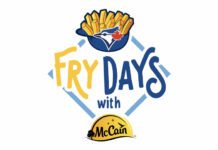What do restaurant brands looking to win their recovery, re-set for long-term success and insulate against the next socio-economic disruption need to do?
With the first wave of COVID-19 seemingly in the rear-view and an uncertain recovery still ahead, restaurant leaders are urged to pause recovery planning and ask this question instead: how essential are you?
First, here’s a little perspective on the pandemic. At its core, the “essential” distinction represents the core frontline public-safety functions and roles that protect and hold together the fabric of our society. This top tier of essential public services, as we’ve learned, is largely — and rightly so — determined by the inner workings and decisions of government and public-health authorities.
So, rather than debate where the restaurant industry fits inside of this broader interpretation, we should be embracing “essential” in the context of what we can control; ensuring restaurant brands are better prepared and insulated for the next marketplace disruption.
With this in mind, let’s think of becoming essential, as an outcome, in this context:
- Our customers will view us as something more than a business, product or service.
- We’ll inspire affinity in our customers. We remain differentiated and top of mind because our customers see in us the best qualities they aspire to see in themselves.
- We’ll be hyper-relevant to our customers and embrace their insights to inform business decisions, corporate culture and content.
- We’ll cultivate purchase intent by building frictionless customer engagement through the customer journey.
Essential brands create unbreakable bonds with their customers. More than marketing, more than menu, these bonds enable essential brands to sustain and even thrive through.
How Essential Are you?
Walk through this simple exercise with your brand and marketing team to determine how essential you are to your customers and how prepared you are to build and leverage this significant piece of differentiation to win your recovery, re-set your brand for long-term success and insulate against the next socio-economic disruption.
Are you essential? Grade yourself across a simple academic scale — A+ to F — for each of the five statements below.
1. We have elevated the role of our customer in making important business and brand decisions by collecting and activating core insights from reliable and relevant customer data.
We have seen enough through the shutdown and the early stages of re-opening to understand a few new fundamental truths about the post-COVID-19 restaurant customer. Restaurant customers are re-entering the marketplace more informed and empowered than ever and are very specifically voicing their concerns and priorities as they make decisions about the restaurant brands they want to engage with.
Health and safety are certainly table stakes now, but essential brands differentiate and create long-term engagement with customers by routinely gathering insights on experience, intent and emotional connection while systematically applying customer
analytics to broader decision-making.
2. We’re re-allocating traditional marketing budgets away from expensive and inefficient awareness and sales-promotion tactics to focus on always-on brand initiatives with low customer-acquisition costs and high lifetime-customer value metrics.
The “buzzword-ization” of restaurant marketing has obscured the real problems that plagued the restaurant industry even prior to the pandemic shutdown. “Price,” “discount,” “value” and “traffic” are really just traditional boardroom fixations on what we’ve always thought customers wanted and the superficial outcomes we desired. These buzzwords represent an outdated marketing playbook that massively overstates the effectiveness of awareness campaigns and price-based promotions and under-delivers on brand differentiation and long-term customer retention.
Essential brands have evolved towards, and embraced, the broader view of an always-on, data-driven marketing strategy — building affinity, creating relevance and driving purchase intent through the customer journey and reallocating budgets to invest in the most hyper-engaged customer segments.
3. The pandemic has inspired our brand to think bigger and turn the page on conventional thinking.
We know that post-COVID-19 customers are increasingly drawn to brands that
prioritize health and safety, as well as inclusion and diversity in their
cultures. Traditional dayparts look more and more like a thing of the past, while alternative revenue channels and digital transformation are rapidly becoming essential to survival.
Essential brands choose aggressive brand re-invention to become more relevant to today’s demanding and discerning customers and create the operational flexibility to innovate around the unseen challenges and demands of tomorrow. Essential brands are almost always better positioned for short-term stability and long-term growth.
4. We have re-imagined our marketing team to better deliver on real customer-engagement metrics that reflect high levels of affinity, relevance and purchase intent through the full customer journey.
Knowing many marketing teams have been at least partially dismantled as a result of the pandemic shutdown, we must recognize the opportunity to shift away from the traditional team structures that are long on promotion and tactical execution and short on real customer-engagement planning. The problem with traditional marketing teams — and media-driven tactical models — is they’re entirely driven by the “what” rather than the “why.”
Essential brands leverage customer-experience (CX) metrics to identify specific customer target points through the customer journey and more efficient resource-specific growth opportunities with the most effective and efficient mix of internal and external teams.
5. We’re re-thinking our franchise-partnership model to better prepare and support our franchisee network in a forever-changed industry and disrupted, uncertain future marketplace.
As franchised brands continue to work through recovery planning, the timing couldn’t be better to completely re-think the existing, flawed franchise model.
An important step towards becoming essential is to shift away from yesterday’s conventional, legally bound and operationally oriented franchise partnerships and embrace a brand-coalition model that more formally brings together the voices of the franchisor, franchisee and customer, while setting clear expectations on roles, responsibilities and decision-making.
Franchise brand-coalition models can build stronger franchised brands by more formally embracing and leveraging actionable customer data and customer-engagement metrics while empowering franchisees to represent and reinforce their brand inside of stores and communities.
A franchise brand-coalition framework should ideally be built into revised franchise agreements. Franchisees and franchisors would sign off on an expressed brand promise from which all actions and decisions derive.
Now it’s report-card time.
If you graded your brand as an “A” performer, congratulations. If you ended up with “Cs” and “Ds,” don’t worry, my guess is you have lots of honest company in the industry. Regardless, we have lots of work ahead of us and this exercise can be a helpful blueprint as a simple reference or a full strategic-planning model. Think about the brands you most admire and those that were best positioned to survive a shutdown, weathered the storm and are already beginning to thrive through recovery. The common thread? These brands are almost always obsessed with brand differentiation and customer engagement. The important thing to understand is not how these brands acted and reacted to the disruption and adversity caused by the pandemic, it’s how they were already elevated and embraced by customers as unique, relevant, engaging and accessible. In other words, essential.
By Brandon Poole
He is managing director and Restaurant/Foodservice lead with Cult Collective Toronto. He has 20 years of progressive cross-functional experience with Boston Pizza, Canada Bread (Maple Leaf Foods) and Pita Pit Canada.


















